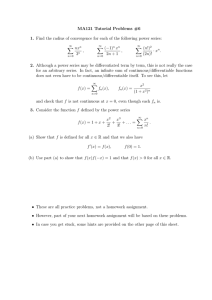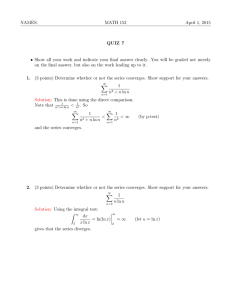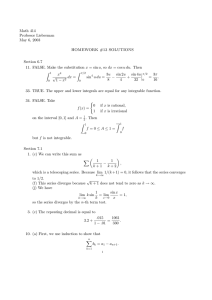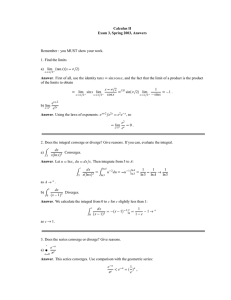Math 414 Professor Lieberman May 2, 2003 PRACTICE FINAL EXAM
advertisement
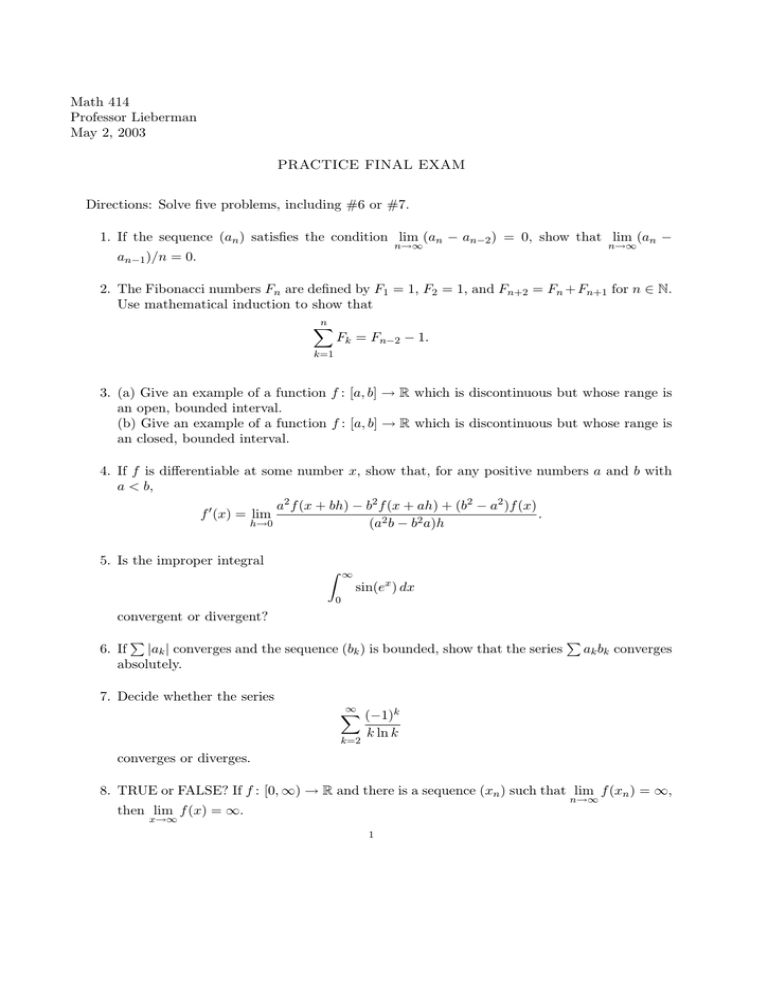
Math 414 Professor Lieberman May 2, 2003 PRACTICE FINAL EXAM Directions: Solve five problems, including #6 or #7. 1. If the sequence (an ) satisfies the condition lim (an − an−2 ) = 0, show that lim (an − n→∞ n→∞ an−1 )/n = 0. 2. The Fibonacci numbers Fn are defined by F1 = 1, F2 = 1, and Fn+2 = Fn + Fn+1 for n ∈ N. Use mathematical induction to show that n X Fk = Fn−2 − 1. k=1 3. (a) Give an example of a function f : [a, b] → R which is discontinuous but whose range is an open, bounded interval. (b) Give an example of a function f : [a, b] → R which is discontinuous but whose range is an closed, bounded interval. 4. If f is differentiable at some number x, show that, for any positive numbers a and b with a < b, a2 f (x + bh) − b2 f (x + ah) + (b2 − a2 )f (x) . f 0 (x) = lim h→0 (a2 b − b2 a)h 5. Is the improper integral ∞ Z sin(ex ) dx 0 convergent or divergent? P P 6. If |ak | converges and the sequence (bk ) is bounded, show that the series ak bk converges absolutely. 7. Decide whether the series ∞ X (−1)k k=2 k ln k converges or diverges. 8. TRUE or FALSE? If f : [0, ∞) → R and there is a sequence (xn ) such that lim f (xn ) = ∞, n→∞ then lim f (x) = ∞. x→∞ 1 2 9. If a > 0 and b is any real number, show that the equation x3 + ax + b = 0 has exactly one solution. 10. Show that f (x) = x sin x is not uniformly continuous on the interval [0, ∞).





